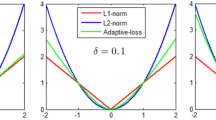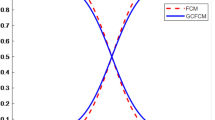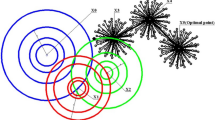Abstract
Minimal Enclosing Ball (MEB) is a spherically shaped boundary around a normal dataset, it is used to separate this set from abnormal data. MEB has a limitation for dealing with a large dataset in which computational load drastically increases as training data size becomes large. To handle this problem in huge dataset used in different domains, we propose two approaches using Fuzzy C-mean clustering method. These approaches find the concentric balls with minimum volume of data description to reduce the chance of accepting abnormal data that contain most of the training samples. Our method uses a divide-and-conquer strategy; trains each decomposed sub-problems to get support vectors and retrains with the support vectors to find a global data description of a whole target class. Our study is experimented on speech information to eliminate all noise data and reducing time training. For this, the training data, learned by Support Vector Machines (SVMs), is partitioned among several data sources. Computation of such SVMs can be achieved by finding a core-set for the image of the data. Numerical experiments on some real-world datasets verify the usefulness of our approaches for data mining.
Access this chapter
Tax calculation will be finalised at checkout
Purchases are for personal use only
Preview
Unable to display preview. Download preview PDF.
Similar content being viewed by others
References
Schölkopf, B., Smola, A.J.: Learning with Kernels: Support Vector Machines, Regularization, Optimization, and Beyond. MIT Press, Cambridge (2001)
Kocsor, A., Kwork, J., Tsang, I.: Simpler core vector machines with enclosing balls. In: ICML 2007, pp. 911–918. ACM (2007)
Cheung, P.M., Kwok, J., Tsang, I.: Core vector machines: Fast SVM training on very large datasets. Journal of Machine Learning Research (6), 363–392 (2005)
Tay, F.E.H., Cao, L.J.: Application of support vector machines in financial time seriesforecasting. Omega, 309–317 (2001)
Lai, K.K., Yu, L., Huang, W., Wang, S.: A Novel Support Vector Machine Metamodel for Business Risk Identification. In: Yang, Q., Webb, G. (eds.) PRICAI 2006. LNCS (LNAI), vol. 4099, pp. 980–984. Springer, Heidelberg (2006)
Bãdoiu, M., Clarkson, K.L.: Optimal core-sets for balls. Computing Geometry Theory Application 1(40), 14–22 (2008)
Asharaf, S., Murty, M., Shevade, S.K.: Multiclass core vector machine. In: ICML 2007, pp. 41–48. ACM (2007)
Al-Zoubi, M.B., Hudaib, A., Al-Shboul, B.: A fastfuzzyclusteringalgorithm. In: Proceedings of the 6th WSEAS Int. Conf. on Artificial Intelligence, Knowledge Engineering and Data Bases, Corfu Island, Greece, pp. 28–32 (2007)
Alkanhal, M., Alghamdi, M., Muzaffar, Z.: SpeakerVerification-based on SaudiAcceted Arabic Database. In: ISSPA 2007, 9th International Symposium on Signal Processing and its Applications, Sharjah, United Arab Emirate, pp. 1–4 ( February 2007)
Speaker corpus in, http://www.ll.mit.edu/mission/communication/ist/corpora/SpeechCorpora.html
Author information
Authors and Affiliations
Corresponding author
Editor information
Editors and Affiliations
Rights and permissions
Copyright information
© 2012 Springer-Verlag Berlin Heidelberg
About this paper
Cite this paper
Nour-Eddine, L., Abdelkader, A. (2012). Reduced Large Datasets by Fuzzy C-Mean Clustering Using Minimal Enclosing Ball. In: Casillas, J., Martínez-López, F., Corchado Rodríguez, J. (eds) Management Intelligent Systems. Advances in Intelligent Systems and Computing, vol 171. Springer, Berlin, Heidelberg. https://doi.org/10.1007/978-3-642-30864-2_29
Download citation
DOI: https://doi.org/10.1007/978-3-642-30864-2_29
Publisher Name: Springer, Berlin, Heidelberg
Print ISBN: 978-3-642-30863-5
Online ISBN: 978-3-642-30864-2
eBook Packages: EngineeringEngineering (R0)




